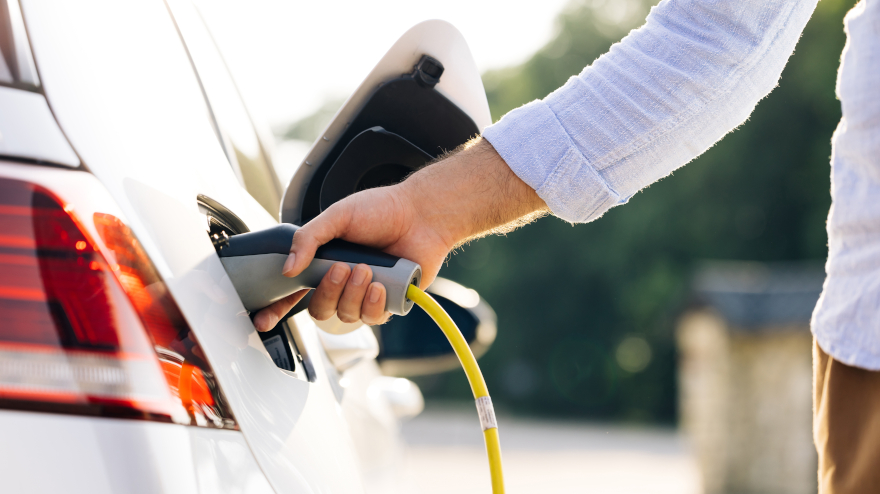Used EV prices drop further than overall market, but are slow to sell

Average prices on 1- to 5-year-old vehicles in October were down 5.1% year-over-year, according to analysis from iSeeCars.com.
Moreover, the latest CARFAX Used Car Price Index shows that those declines continued “across the board” in November.
But the price drops for used electric vehicles (and to a lesser extent, hybrids) have been far more extensive, approaching 34%, the iSeeCars data shows.
And here’s the kicker: while the average turn time for used cars has improved significantly, turn times for used EVs and hybrids have jumped from a year ago. So, what can we take away from that?
“Even with massive price drops, electric vehicles are selling slower than gasoline and hybrid vehicles,” iSeeCars executive analyst Karl Brauer said in the report.
“This combination of lower prices and slower sales suggests EVs have hit a market demand threshold that will be difficult to break through,” Brauer said. “Everything from economic concerns to growing competition among electric vehicles is contributing to their downward trend.”
Here are some specifics: The average used EV price in October was $34,994, which is down 33.7% year-over-year, iSeeCars said. For hybrids, used prices fell 9.6% to $31,511.
Again, overall used-car prices fell just 5.1% in the same time frame, coming in at $30,972 in October.
Industry-wide, used cars are taking 49.2 days to sell as of October, down from 54.9 in October 2022, the iSeeCars data shows. But turn times for used EVs climbed from 37.5 days to 52.4 days, with hybrids jumping from 34.3 days to 46.7 days.
And there were three EVs on iSeeCars’ list of top 10 slowest-selling used models in October: that included the Kia EV6 at No. 2 with a 95.9-day turn time, Ford F-150 Lightning at No. 8 (78.4) and Polestar 2 at No. 10 (73.4).
“Most of today’s slowest selling used cars are premium models or electric vehicles, with the Maserati Quattroporte, Kia EV6, and Jeep Grand Cherokee taking over twice as long to sell as the average used vehicle,” said Brauer. “The F-150 Lightning, Ford’s electric truck based off the best-selling vehicle in the U.S., is also struggling to find buyers.”
Interestingly enough, even with days-to-turn climbing for the segment, a trio of hybrids ended up on the top-10 fastest sellers, including the top two spots.
That included the BMW X5 in first (26.8 days to sell) in first and the Toyota Highlander Hybrid in second (29 days to sell).
The Hyundai Elantra Hybrid was No. 6 with a turn time of 31.8 days.
“The fastest-selling used cars represent the dual nature of today’s car market,” said Brauer. “You have a large contingent of consumers looking to cut fuel costs, thus the popularity of hybrids. But you also have shoppers who aren’t — yet — feeling the crunch of higher interest rates and inflation and these buyers want something fun like a BMW M2 or Porsche 718 Boxster.”
In terms of price declines in October, the top five were all EVs.
That included the Nissan LEAF, whose 30.6% year-over-year decline put it at No. 1 on the iSeeCars list.
It was followed respectively by the Tesla Model 3 (down 30.5%), Chevrolet Bolt EV (down 28.7%), Tesla Model X (26.2%) and Tesla Model S (down 24.7%).
Furthermore spots Nos. 6-7 were hybrids: Chrysler Pacifica Hybrid (down 20%) and BMW 5 Series Hybrid (down 18.7%).
Turning to November data from CARFAX, hybrids and EVs had the most significant year-over-year price decline among the segments listed in the analysis, falling 14.4%.
Vans fell 5%, luxury cars were off 8.1% and luxury SUVs dropped 5.6%. SUV prices were down 5% and cars prices fell 4.1%, while pickup truck prices were the only segment to see an increase (0.6%), according to the CARFAX data.
“After a month where it looked like used-car prices had bottomed out, they’re now declining further — slowly, to be sure — across the board. When compared to the same time last year, it looks as though they will continue sliding into the spring months,” CARFAX said in its report.
“While industry observers had been concerned that the United Auto Workers (UAW) strike against Ford, General Motors, and Stellantis would last a lot longer than it did, the relatively quick end means that inventories were not as drained as dealers had feared,” the company said. “That means consumers have more choices, and that means lower prices.”


